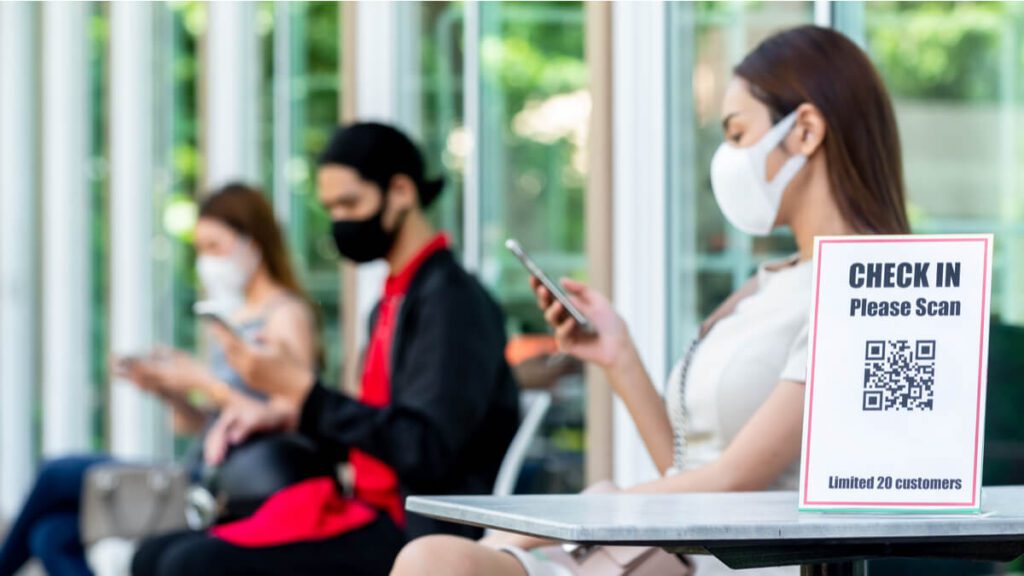
As we continue adapting to the pandemic, we notice that our needs as consumers are rapidly changing. Not so long ago, standing in-line at a packed fast food chain, waiting to get served, was considered to be the norm in dining experiences; we can evidently see how this scenario can’t be applied in the time of COVID-19.
Enter contactless tech – a solution that has proven itself to be a fundamental necessity amid the pandemic. Technology teams from several restaurant chains have been trying to implement contactless tech to streamline visits, enhance the customer journey, and ultimately make their employees life easier.
Various types of contactless tech ranging from QR codes to robots have aided restaurant chains. We break down the top contactless tech ideas that were brought forward by technology chief attendees of Restaurants Rise powered by MUFSO in a panel titled Touchless Tech: How chains are reimagining technology with the use of contactless ordering and the resurgence of QR codes. The panel was sponsored by Ziosk.
The comeback of QR codes
QR codes which have already been around for a decade or so, started making their way back into the limelight before the pandemic hit, proving their value as a practical type of contactless tech. QR codes have become an integral part for Tocaya Organica, a 16-unit “experiential fast-casual” chain serving Mexican food in California and Arizona that’s part of The Madera Group.
The technology allows guests to point their smartphones at the codes placed on tables, pull up the restaurant menu and order. Each table has a custom QR code, allowing servers to know where to bring the orders once they’re ready.
Justin Keenen, Tocaya Organica’s Director of Information Technology commented that the team “had to make sure that that experience carried over as much as possible,” as the restaurant chain moved away from traditional counter service to placing an order at the table using QR codes.
Guests can point their phones at the codes on each table, pull up the restaurant’s menu and order. Each table has its own QR code, so servers know where to bring the orders when they’re ready, and Keenen hired the tech company Thanx to build access to the chain’s loyalty program on top of the Olo ordering software, allowing guests to accrue and redeem points from their phone.
Keenen added that about 80% of the users surveyed provided “overwhelmingly positive feedback,” with the contactless tech being very easy to use.
Geo-tagged pickup
Popular El Pollo Loco, the fast-casual grilled chicken chain with 480 locations has now enabled geo-tagged curbside pickup at 95% of all its locations according to Andrew Rebhun, the chain’s Vice President and Digital Officer.
With curbside pickup being planned for 2021, once the pandemic hit, those plans were expedited. Rebhun and the team worked to launch the service via the El Pollo Loco app this summer, starting with 20 restaurants and quickly scaling up.
It’s also a contactless tech that is fairly easy to use. Customers opt into GPS tracking, which will then alert the restaurant as they are driving up, allowing the team members to bring their order directly out to the car.
Guests that don’t want to opt in for GPS, can simply click the “I’m here” button and a crew member will be out with a face mask to deliver the order.
Vice President of Technology at White Castle (fast food chain with 360 locations) Susan Carroll-Boser told Restaurants Rise attendees that they are currently testing two new technologies at one location in Indiana: Flippy the Robot and a new drive-thru menu board with artificial intelligence
Flippy the robot
The headline grabber is Miso Robotics’ Flippy the robot.
White Castle is deploying the “robot on a rail” mechanism to work the fry station. It operates above the fryer, so it doesn’t bother any team members.
Flippy operates with a smart freezer provided by Computer Vison. This smart freezer controls portions and schedules when items are to be fried, with human team member supervision
AI Powered Drive-Thru Menu Board
The same White Castle branch in Indiana is also testing an AI powered drive-thru menu board.
By using voice recognition technology from SoundHound, the menu board has the ability to listen and respond to customers. Guests can select a “known-user experience” that allows the AI to recommend items from the menu tailored to them.
The contactless tech is also capable of performing “basket analysis” and can assess what’s been ordered and make really good suggestions as to what customers might want to add.
Using voice recognition technology from SoundHound, the menu board can listen to and respond to customers. According to Carroll-Boser, a person can opt into a “known-user experience” that allows the AI to recommend menu items tailored for the customer.